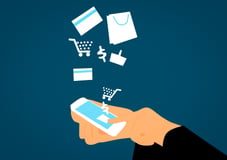What are archetypes and how to identify them
Index Content
In marketing, archetypes are patterns of behaviour of individuals that influence their purchasing decisions. The leading exponent of this theory is Carl Gustav Jung.
According to Jung, and earlier psychoanalysts, the mind is a blank sheet of paper at birth, with no ideas or values of its own or universal. Everything we believe about concepts such as "good" or "bad" has been acquired through the influences of people and social environments around us. Jung was in line with some Freudian ideas, a contemporary of his with whom he worked early in his career. He applied them to the field of archetypes, especially in relation to the "collective unconscious". Jung states that archetypes are part of this section, so that we are not always aware of what we really want or what value makes us choose one option or another.
This is why, for example, in market research techniques, so-called projective methods are used . In these cases, the aim is to explore the consumer's creativity by trying to bring their deepest reasoning to the surface without them having to consciously search for it. Another common projective technique is to ask them to create relationships between two values, to see what mechanisms are connected in their deepest thoughts.
Marketing draws on this Jungian psychoanalytic theory to profile psychological types of buyers and implement strategies. They assume that archetypes are the same everywhere. These studies are based on the idea that, as in politics, consumers are also influenced when it comes to buying. A customer may choose to buy one service or another based on recommendations or trends.

Application to marketing:
Jung's archetypes have been used to create brand image. Studies such as Margaret Mark and Carol S Pearson' sTheHero and the Outlaw: Building Extraordinary Brands Through the Power of Archetypes delve into the idea of projecting an image of the company designed to be admired by different archetypes, or to correspond to one of them.
But they have also been used to explore, through archetypes, the general imaginary of a sector or a product: what aspects are most valuable, what is the greatest weakness, what trends are followed... All of this is intended to predict the current mode of consumers in order to be able to anticipate them and give them precisely what they were looking for, instead of manufacturing it once they have asked for it.
These are the 12 brand archetypes:
The magician
A magician is someone who is capable of transforming reality, generally for the better. A person who, thanks to his or her abilities, seems to have supernatural powers and who dominates the environment, who can shape it at will. In terms of brand image, the magician would be that brand that seems willing, full of illusion, to do the impossible. To change things radically, always for the better. That sells the impossible as possible. It is surrounded, of course, by a halo of mystery and fantasy that gives it a value as supernatural as the powers of a magician. Of course, in marketing there are no spells, and everything that the brand achieves is based on real, normal and ordinary facts.
The sage:
A sage is the owner of knowledge, truth and wisdom. Their analysis is accurate and correct and through a sage you can get great solutions to all your problems. They are people admired and revered for their knowledge, not for their attitudes or values.
In terms of brand image, a sage would be a company that offers you knowledge, knowledge through which you can get a little closer to that utopian sage, to absolute knowledge.
Publishing houses, media, think tanks... These types of companies seek to differentiate themselves through their knowledge and that their clients come to them in search of the truth.
The innocent:
The innocent is the gullible, naive person who does not look at the world in its totality. In terms of a person, it would be someone who does not see the seriousness of the problems. But also, for the same reason, it is a person who reduces their problems to the maximum expression, with easy, quick and simple solutions. The latter is what interests marketing.
A brand that pursues this archetype wants you to minimise your problem. You are overwhelmed but what is really happening to you is that, until this very moment, you did not know that the only, easiest, fastest and most effective solution is to trust our company. That is the kind of message that an innocent archetype conveys.
This type of brand focuses a lot on the hedonism of life, pushes customers to put aside small worries (easily solved, because they take care of that), while, thanks to them, you can dedicate all your time to a carefree freedom.
Clear examples of this are insurance companies or law firms.
The buffoon:
Closely related to the innocent in that the solution to everything is laughter and humour. Laughing at problems is the best way to put an end to them. However, the solution does not come from ignorance but from the place where you face situations. The most important thing in life is to laugh and enjoy yourself, shopping does not have to be a serious, determined and sober process. Have fun shopping and you will see how everything around you takes on a different colour.
This archetype is not suitable for all brands, only for those that sell a product or service that lends itself to fun, laughter and absurdity. A high-end car would never go for this archetype, as a drink would.
The explorer:
The insatiable adventurer, a person who never tires of discovering new places, who is constantly on the move. They are therefore usually people with a lot of experience, knowledge and experiences that are very different from others. They are active, willing, determined and fearless.
A brand that wants to offer all these values must give an image similar to these values. Through this company you can be that explorer without limits. This archetype is what clothing and sports brands, travel agencies, some cars... live from.

Nina Luong via Unsplash
The hero:
From the Greek literary tradition the hero is destined to sacrifice his whole life to save the lives of others. To change the world to make it a better place, even if he loses everything along the way. Selflessness coupled with courage and strength. The hero never gives up, overcomes all obstacles that stand in his way and continues unceasingly to his goal.
He is in some ways similar to the explorer, although there is a tinge of altruism and vanity in him that the former does not have. The hero devotes much more effort to the common good, unlike the explorer who seeks only his own satisfaction.
Sport brands also live by this archetype, with slogans that invite us not to give up and keep fighting.
The caregiver:
The one who offers protection and care. The world can be a hostile place that hurts us, but thanks to caregivers, we can overcome the blows of life. The caregiver heals our wounds and is a person who inspires absolute confidence.
NGOs, healthcare and pharmaceutical companies all draw from this archetype.
The ruler:
The one who seeks to have everything under control, but only under his control. To lead the world, to guide the mass, to be the top of the pyramid. Whoever governs does so because of his aptitudes and abilities: intelligence, courage, decisiveness, strength, constancy, but above all, power. These are all attributes that a good leader must have and, at the same time, they are values that express high-end brands.
The rebel:
One who rebels against the established, generally denouncing injustice. What is present does not have to be right, what is legal does not have to be the best. Limits are his comfort zone and crossing them is his daily bread. The established way of doing things is far from being the best.
Transgressing boundaries and stepping out of the ordinary, those are the values that brands using this archetype try to express. In today's overcrowded and globalised society, where authenticity is a hidden treasure, the idea of being just another number in a tide overwhelms, individualism and originality are craved.
The creator:
Imagination is their best weapon. The real world can be boring, but creativity, art, exploration brings colour and happiness. Clearly museums and art galleries tap into this archetype, although technology and fashion also tap into it.
The lover:
For the lover, love is the force that moves the world. There is nothing more pure, absolute and overwhelming, it is a feeling intrinsic to the human being. And to be carried away by it is the most primal instinct.
In the field of marketing, this archetype is interesting because it is mostly used as an added value, as a non-immediate need that will be covered thanks to the product you are about to buy. Perfumes, clothes, beauty... Love floods you if you are accompanied by all these things.
The ordinary person or friend:
Many people seek to make their lives epic, as we have seen in some archetypes. However, the beauty of life for these people is in the ordinary. Seek happiness in the little things and not be overwhelmed by the immensity of the world. Slow, confident and calm, this is how this archetype moves through life.
Of course, a brand does not have to be reduced to a single archetype. It is enough to give a coherent image that connects with several of them that are related. If brands seek to identify with the values of these archetypes, it is always to capture the people who in turn represent these same archetypes, so it does not make sense to reduce their target to just one.




